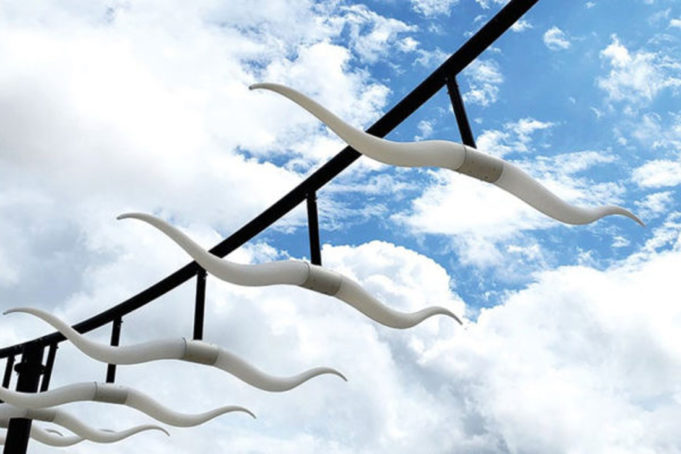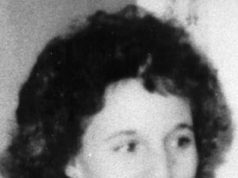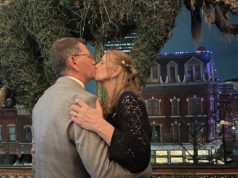Van Cliburn, the Kimbell Art Museum, and the Fort Worth Circle are as important to the identity of our city as the Stockyards and the skyline. City leaders, perhaps willfully forgetful of that truism, have often cut public spending for the arts whenever politically expedient projects — like Dickies Arena, Amazon Fulfillment Center, and Facebook Data Center — required taxpayers to float investors through direct investments or tax breaks.
This story goes back to 2013. That’s when Arts Fort Worth (formerly the Arts Council of Fort Worth) suffered its first huge budget cut in recent memory. The nonprofit that oversees funding for dozens of arts groups across Tarrant County and also Fort Worth Public Art was left with $866,450, about half of its total allotment five years earlier. City Council said cuts were needed across the board to balance the budget. Arts supporters blamed the cuts on the up-and-coming Dickies Arena. Some conservative leaders said they wanted to remove the City of Fort Worth from the arts-funding game altogether — a stated aim that appears to be returning.
People who work in the arts in Fort Worth say City Manager David Cooke is seeking to gut funding for Arts Fort Worth and Fort Worth Public Art, claiming his ultimate goal is to privatize public art and arts funding in general even as major cities across the country rely on nonprofits to distribute public funds in a fair and equitable manner.
Seeing how much money is generated by the arts across the globe, you could see why some greedy players might want a piece of the action or some of the accolades that come with being an arts patron in the city of Cowboys and Culture. Over the past decade, arts and culture have produced $6.1 billion in economic activity for Texas. That’s according to a new report by Texas Cultural Trust, a nonprofit that advocates for arts-centered learning in public schools. The most recent economic impact study in Fort Worth, this one funded by Arts Fort Worth, found that, in 2015, arts-related activity generated $26 million annually for local government and more than $450 million per year for the local economy.
Cooke did not respond to my requests for comment. Fort Worth Assistant Manager Fernando Costa told me that any rumors about cuts to Arts Fort Worth and Fort Worth Public Art have no basis in fact.
“We’ve been working with the Arts Council to streamline the delivery of public art projects in a budget-neutral manner,” Costa said in an email. “The Arts Council has been cooperative and helpful in this effort to complete most public art projects within three years of authorization.”
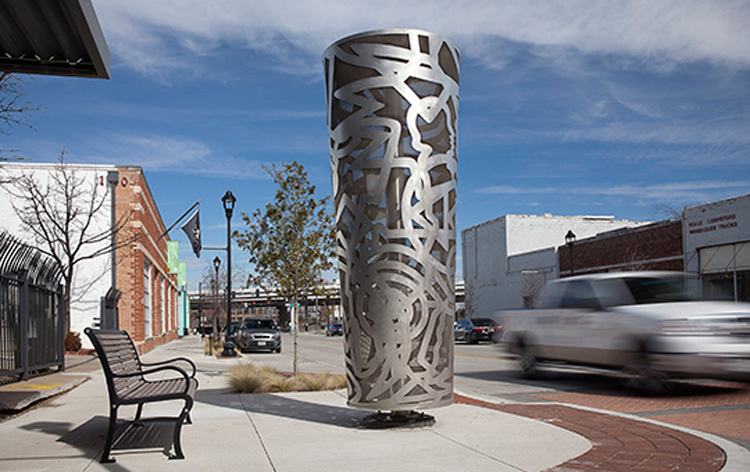
Photo courtesy Fort Worth Public Art
Costa said the city is similarly not looking to disrupt the work done by Arts Fort Worth. He said the city has been working with an advisory group to examine the feasibility of converting the 68-year-old Fort Worth Community Arts Center, where Arts Fort Worth and Fort Worth Public Art are headquartered, into a proposed Fort Worth African American Museum.
The building at 1300 Gendy Street in the Cultural District is “one of several sites that the steering committee is considering for such an institution, and we’re helping them to raise funds for a detailed feasibility study,” Costa continued. “The possibility of converting that building is merely an idea at a formative stage, and the city wouldn’t act upon it without more public discussion and without more compelling data to support such action.”
The 21-member steering committee headed by local museum directors and business leaders will meet in May to further discuss potential future sites for the museum. One confidential source shared an email sent from Costa to Arts Fort Worth directors that states the Community Arts Center ranks second in the listing of buildings the steering committee is recommending for conversion to a new museum.
In an email, Costa said the steering committee is still early in their search for a suitable home for the Fort Worth African American Museum.
The committee members “have not yet completed preliminary discussions with diverse civic leaders, conducted a detailed feasibility study, or formally approached the city about using the city-owned building at 1300 Gendy Street,” Costa said in an email. “Even if the city were eventually to find adaptive reuse of that building to be feasible and desirable, the proposed African American museum and cultural center would benefit from cooperation and co-location with [the nonprofit] Kids Who Care and [Arts Fort Worth]. In any case, the future of the public art program is not dependent upon any decision that the city might make about the 1300 Gendy Street building.”
Public emails reveal that in early March, city leaders raised concerns over the length of time public art projects take to complete — something that arts supporters believe is a pretext for dismantling public funding for the arts.
“I think we should amend our contract with [Arts Fort Worth] so as to require compliance with appropriate timeliness standards,” Costa wrote, adding that Arts Fort Worth should release monthly reports that outline public art project progress. “I also think that we should identify all pre-2018 public art projects that have not yet reached the fabrication state and determine whether we should terminate any of those projects.”
Martha Peters, director for Fort Worth Public Art, declined to comment on this story, but public art commission chair Estrus Tucker did go on the record about the allegations against Cooke. Tucker defended the $505,295 that the city contributes to the public art program as part of broader funding for Arts Fort Worth. That funding pays the six staffers who manage the program, but many of the public art projects are funded through bond programs in which the city pays the artists and their subcontractors directly rather than through the public art program.
Tucker said that, while the commission welcomes recommendations on ways to streamline and improve the process of placing public art throughout Fort Worth, city officials do not appreciate that artists do not work like city contractors.
“There is a failure to appreciate the process,” Tucker said in a phone interview. “A lot of the steps involved are in the hands of city staff. City staff have to review certain things because it is their contract. We involve the city councilmembers and the community. All these things take time.”
Over the coming weeks and months, Tucker and supporters of the city’s public art program will engage artists, institutions, and the general public to encourage them to speak out loud in support of public art, Tucker said, adding that the quality of work produced by Fort Worth Public Art will be the advocacy effort’s strongest argument against Cooke’s defunding efforts.
Fortunately, Tucker added, Mayor Mattie Parker and city council value public art, the gifted artists who create the art, and the professional staff that support the process.
“Our exhibits are refreshingly diverse — an expression of the full range of our cultural heritage,” Tucker added. “For the city to be absent as it relates to public art is unacceptable. Look at other world-class cities in this country. We have so many different models to look at. I’m not aware of any city that has relied exclusively on the private sector to advance public art. Cities are an essential catalyst for broad-based participation in public art. That is a relinquishing of responsibility and accountability. Privatization would be going backward.”
Last week, the head of Arts Fort Worth, Karen Wiley, announced her decision to retire so she can focus on her own art. The timing of her decision is not connected to Cooke’s ongoing public criticism of the nonprofit but rather with the strategic planning process that concludes in June. Wiley declined to comment on this story.
Cooke’s open disdain toward Arts Fort Worth, sources say, can be traced back to a couple of boilers. In December, Arts Fort Worth staff said they believed one of two boilers in the bowels of the Fort Worth Community Arts Center needed to be replaced. The staffers claim Cooke dismissed their concerns. The staffers then said this was around the time he began criticizing other areas of the organization.
The arts supporters and volunteers who spoke with me worry that Cooke, who creates drafts of the city budget that Fort Worth City Council approves every September, will use his position to unilaterally cut funding for Arts Fort Worth and Fort Worth Public Art. Based on city documents, Fort Worth’s budget for maintaining the arts center — $200,000 per year — has not increased over the past decade. In 2008, city leaders cut the building’s annual maintenance budget by $80,000 to where it remains today.
One city proposal may bring a bit of good news to a battered Arts Fort Worth staff. The date to remember is Saturday, May 7. That’s when Fort Worth will vote on whether or not to allot millions of dollars to the city for public art programs.
Bond election director Roger Venables said in an email that the five propositions could generate $3,655,300 to $7,102,000 in public art funding, as part of a larger $560 million proposal, for the bond that aims to build new infrastructure, parks, and city buildings in the coming years.
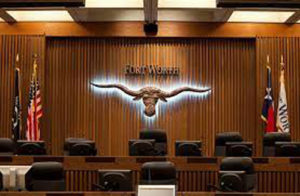
Photo courtesy Fort Worth Public Art
Arts Fort Worth’s current $1,786,370 contract with the city, which I reviewed, allows the city to terminate the agreement with 30 days’ notice in writing, meaning Arts Fort Worth will be around to see the results of the bond vote. City councilmembers approved a $1.8 billion budget for 2022, meaning Arts Fort Worth represents just under .1% of the city’s overall budget. Dallas, by comparison, allots around $20 million per year to support local arts groups while San Antonio contributes just over $11 million per year to arts programs. Dallas and San Antonio each fund a central arts organization that disburses public funds as Arts Fort Worth does.
Any disruption or delays in public funding for local arts groups could have disastrous consequences for the nonprofits that already run on tight budgets.
I reached out to Americans for the Arts, the national advocacy group for nonprofits that program visual and performing arts, for updated figures on per capita spending on the arts in Texas but did not hear back. Historically, Fort Worth has lagged behind other major cities in that area, and those numbers reflect the priorities of city leaders rather than the general public. In 2013, a study commissioned by the arts council found that Fort Worthians spent 94 cents per capita on the arts while Austin ($6.34), San Antonio ($5.98), and Houston ($2.33) far outspent that amount.
Partnering with private interests would bolster Cooke’s connections to and leverage with local movers and shakers who could potentially team with the city on future private-public partnerships.
Tucker said that part of the arts community’s response will need to involve the public and city council. By inviting the public to have a conversation about the role and importance of public art, Tucker said he and his supporters can change Cooke’s narrative that Arts Fort Worth and Fort Worth Public Art are not good stewards of taxpayer monies.
Fort Worth’s city manager maintains a low profile, and his public comments are infrequent, but his record on funding the arts — across multiple mayoral and city council administrations — is public record. Arts Fort Worth’s funding has been in trouble since 2011, and the city’s allotments for repairing the community arts center remain frozen at 2011-levels. As the city’s top administrator who drafts budgets, Cooke can rightfully be blamed for Fort Worth’s abysmal history of underfunding a crucial part of the local economy and a pillar of local cultural life.
“Public art matters, period,” Tucker said. “It is an essential component of economic development and an instrument of equity for the full cultural heritage of a city, race, age, ancestry. Everything that makes us a person is captured in the cultural expression of art. Art is core. Public art is what allows us to look beyond the shadows of privilege without blaming anybody but naming what is while reflecting the hope of something better and more inclusive of us all.”
After many years of supporting the work of professional artists, Tucker said he believes that Fort Worth’s public art will only be as good as city leaders allow it to be.
“We need the city to be as serious about respect for artists and cultural equity as it is about efficiency,” he continued. “When that is approached in a serious manner, we can come together and make those adjustments, so we have a process that respects artists instead of a machine that is responsive to city management’s due diligence and fiduciary role. It’s not that complicated as long as you treat people like humans. Artists are humans. They are not constructing a building. These are people. At times it seems that some see artists as having a hobby rather than a livelihood worthy of equitable wages.”
This article has been updated to reflect new information.



